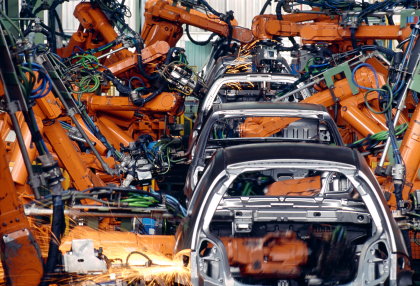What is a business?
 The term 'business' is used to describe all the commercial activities undertaken by the various organisations, which produce and supply goods and services.
The term 'business' is used to describe all the commercial activities undertaken by the various organisations, which produce and supply goods and services.
A business has many features. It is:
- A decision making organisation
- made up of groups of workers (employees), managers, directors and shareholders
- which exists in association with customers, suppliers, competitors, the environment, local, national and other governments
- that uses factors of production
- to produce and sell goods and/or services
- so as to make a profit.
Decision-making
Firms and business studies are all about making and taking decisions. The basic decisions are:
- What to produce - what good or service - and for how long?
- How to produce and in what quantity?
- Who to sell the goods or services to - how to distribute?
Some decisions may have significant consequences. Companies deciding, for instance, to change location or products may invest large sums in their decisions. Poor decisions may result in the closure of the business itself. These types of decisions are called 'strategic' or high level decisions. Businesses need to get these decisions right.
Less important decisions, such as what brand of paper to use, have less important consequences. These day-to-day decisions are referred to as 'tactical' or 'low level' decisions. It is important, however, to remember that too many poor tactical decisions could affect the longer-term strategy. For example in a sports team, the team may be able to cover up for one or possibly two players not playing well. However, if everyone is having a 'bad day' the team will lose!
The business world is dynamic. Little stays the same for long. Management has to detect changes and take decisions on how to react to change on a regular basis. We will learn over the course of this topic and later topics, a whole range of techniques that make decision-making easier. These will be considered as business tools that assist decision making. However, remember, these techniques do not make decisions, people do. A skilled craftsman knows what tool to use and when.
Businesses also have to plan their progress. They aim first to survive, then to grow. This means they normally follow a formal planning cycle designed to address the following questions:
- Where are we now?
- Where would we like to be in the future?
- How are we going to get there?
- How will we know when we arrive?
This framework is a shorthand outline of the strategic decision-making process.
The Classification of a Business
In the same way that individuals have distinct personalities and characteristics, so do businesses. Classifying things help us to understand and define them. The following are ways that we can classify and group businesses, all of which will be examined in detail during this topic:
- By sector - there are two main sectors: private and public. The private sector includes all organisations owned, controlled and managed by private individuals for the purpose of making a profit. The public sector refers to organisations owned, controlled and managed by the government (or state) to provide essential goods and services for the general public. Governments play a role in the production of goods and services that are underprovided by the private sector, such as health and education.
- By level of activity - essentially this describes how close the business is to the customer in the distribution chain. For example, those businesses involved in the extraction of raw materials, such as oil, are very early in the distribution chain, whereas those which own retail outlets are much later in the chain and close to the final customer
- By size - we often classify businesses as small or large, but what do these terms mean? Unfortunately, this classification is complicated by the fact that there are number ways of measuring business size, such as capital employed, market share, sales turnover, profit and the number of employees.
By legal structure -The way that a business is set up affects its legal rights and responsibilities.
